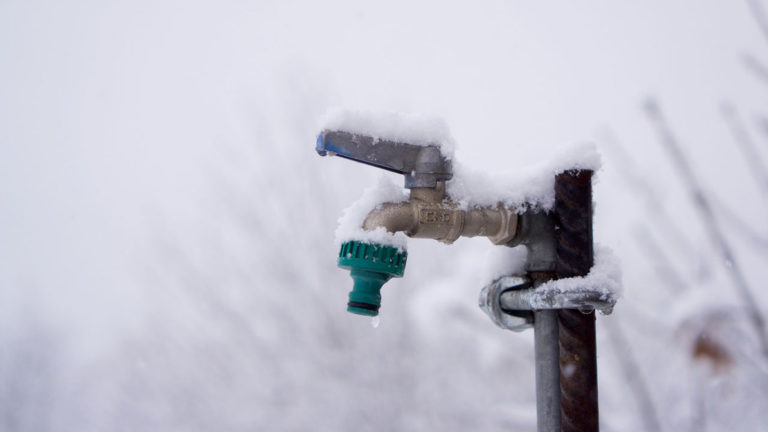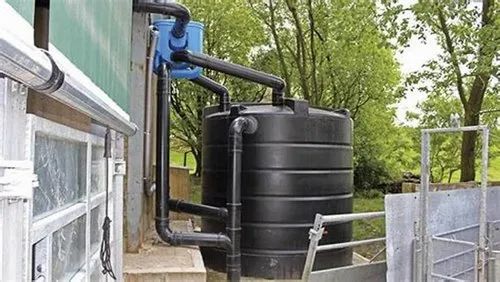Rainwater harvesting is a critical component of any off-grid irrigation system.
By capturing and storing rainwater, farmers can reduce their reliance on costly external water sources, such as municipal or well water, and instead use this freely available resource to sustainably irrigate their crops.
With the right design and implementation, a rainwater harvesting system can provide a reliable source of water for agricultural use, while also helping to reduce the environmental impact of farming practices.
By exploring the benefits and best practices of rainwater harvesting, we can empower more farmers to adopt this important technique and promote sustainable agriculture throughout their communities.
Collection and Storage
The first step in rainwater harvesting is to collect and store rainwater from the roof of your home or building. This can be done using a gutter system and a storage tank, such as a rainwater harvesting system.
This can be achieved using a gutter system, which directs rainwater from the roof into a storage tank.
The gutter system is designed to capture and funnel rainwater, minimizing the risk of water damage or flooding.
The storage tank, such as a rainwater harvesting system, is designed to hold the collected rainwater and make it available for later use.
These tanks come in a variety of sizes and materials, including plastic, concrete, and steel, and can be positioned above or below ground.
By collecting and storing rainwater, you can make the most of this valuable resource, reducing your reliance on municipal water supplies and lowering your water bills.
The storage tank can provide a source of emergency water during power outages or other disruptions.
Overall, the collection and storage of rainwater is a important step in implementing a rainwater harvesting system and reaping the benefits of this sustainable practice.
Purification
Before using the rainwater for irrigation, it’s important to purify it to remove any contaminants or bacteria. This can be done using a sedimentation tank, a filter, or a disinfection system.
Before using rainwater for irrigation, it’s essential to purify it to remove any contaminants or bacteria that may be present.
A sedimentation tank can be used to remove suspended solids and other impurities from the water.
This involves allowing the water to sit in the tank for a period of time, allowing the sediments to settle to the bottom, and then draining the clear water from the top.
Alternatively, a filter can be used to remove smaller impurities from the water.
This can be a chemical filter, such as a activated carbon filter, or a biological filter, such as a pond snail habitat.
These filters use different mechanisms to remove impurities from the water, and can be used in combination for the best results.
In addition to sedimentation and filtration, disinfection systems can also be used to remove any bacteria or viruses that may be present in the rainwater.
This can be done using chlorine or ozone disinfection systems, which kill any harmful microorganisms in the water.
By using a combination of sedimentation, filtration, and disinfection, rainwater can be safely used for irrigation, ensuring that crops are grown in a healthy and safe environment.
Pumping
Once the rainwater is purified, it needs to be pumped into the irrigation system. This can be done using a submersible pump or a centrifugal pump.
Pumping is a important step in the rainwater harvesting system, as it allows the purified water to be transferred into the irrigation system for use.
There are two main types of pumps used for this purpose: submersible pumps and centrifugal pumps.
Submersible pumps are installed directly in the rainwater collection tank and use a motor to pump the water up through a submersible motor housing.
These pumps are ideal for smaller systems and can handle a wide range of solids and debris.
Centrifugal pumps, on the other hand, use a spinning impeller to increase the pressure and flow rate of the water, making them more suitable for larger systems and longer distances.
When selecting a pump, it is important to consider factors such as the size of the system, the flow rate required, and the level of solids and debris present in the water.
Proper pump selection will ensure efficient and reliable operation of the rainwater harvesting system.
Pressure System
The pumped rainwater needs to be distributed to the crops through a pressure system, which includes pipes, fittings, and valves.
The pressure system is a important component of the rainwater harvesting and distribution setup.
It consists of a network of pipes, fittings, and valves that work together to deliver the pumped rainwater to the crops in a consistent and controlled manner.
The pipes used in the pressure system are typically made of durable materials such as PVC or HDPE, and are designed to withstand the pressure and flow rates required for effective crop irrigation.
The fittings used in the system include elbows, tees, and couplings, which connect the pipes and ensure a smooth flow of water.
Valves are also strategically placed throughout the system to regulate the flow of water and ensure that each crop receives the appropriate amount of water.
The pressure system is carefully designed and installed to minimize losses due to leakage or evaporation, ensuring that the maximum amount of water reaches the crops.
Overall, the pressure system is a reliable and efficient method for distributing pumped rainwater to crops, helping to maximize crop yields and optimize water usage.
Sprinkler or Drip Irrigation
The rainwater is then distributed to the crops through sprinkler or drip irrigation systems. Sprinkler irrigation is more suitable for flat areas, while drip irrigation is more suitable for hilly areas.
For effective water distribution, the harvested rainwater is then channeled through sprinkler or drip irrigation systems.
Of the two, sprinkler irrigation is better suited for flat areas due to its consistent water distribution across the surface.
Sprinklers can be placed evenly spaced throughout the field to ensure optimal coverage, resulting in efficient water usage and effective crop growth.
On the other hand, drip irrigation is preferred for hilly areas as it allows for more precise water distribution directly to the roots of the plants, reducing the risk of runoff and improving water retention.
This method delivers water directly to the plants through a network of tubes and emitters, ensuring that each plant receives only the amount of water it needs, making it an excellent option for unique terrains.
Crop Selection
It’s important to choose crops that are suitable for rainwater irrigation. Some crops, such as vegetables and fruits, require more frequent watering, while other crops, such as corn and wheat, require less frequent watering.
When it comes to choosing crops for rainwater irrigation, it’s essential to select plants that are adapted to the local climate and soil conditions, and that require similar watering frequencies.
Some crops, such as vegetables and fruits, thrive in well-watered soils and require more frequent watering, while others, like corn and wheat, are more drought-tolerant and can survive with less frequent watering.
For instance, vegetables like tomatoes, peppers, and cucumbers need to be watered every few days, while grains like corn and wheat can survive with just a few inches of rain per month.
By selecting crops that are well-suited to the local climate and water availability, you can optimize crop yields, reduce water waste, and minimize the need for supplemental irrigation.
Choosing crops that are resistant to pests and diseases can further enhance the success of your rainwater irrigation system.
Monitoring
It’s important to monitor the rainwater harvesting system regularly to ensure that it’s functioning properly. This includes checking the storage tank, the pump, and the irrigation system.
To ensure that your rainwater harvesting system is functioning at its best, it is essential to monitor it regularly.
This includes checking the storage tank, the pump, and the irrigation system.
Start by inspecting the storage tank for any leaks or signs of damage.
Check the water level and make sure it’s at the appropriate level for your system’s capacity.
Next, examine the pump to ensure that it’s operating properly and not showing any signs of wear and tear.
Check the irrigation system to make sure that it’s functioning correctly and delivering water to the desired areas.
By regularly monitoring your rainwater harvesting system, you can catch any issues before they become major problems, saving you time and money in the long run.
Monitoring the system can help you identify areas for improvement, allowing you to optimize its performance and maximize its benefits.
Maintenance
Regular maintenance is important to ensure the longevity of the rainwater harvesting system. This includes cleaning the gutters, cleaning and replacing the filters, and inspecting the pump and other components.
Regular maintenance is important to ensure the longevity and effectiveness of your rainwater harvesting system.
This includes cleaning the gutters, filters, and other components on a regular basis.
Clogged gutters can cause water to pool and potentially damage your roof or walls, while dirty filters can reduce the quality of the collected water.
Inspection of the pump and other components can help identify and address any potential issues before they become major problems.
By performing regular maintenance, you can ensure that your rainwater harvesting system is functioning at its optimal level and provide you with a reliable source of clean water for your household needs.
Performing regular maintenance is essential to ensure the longevity and effectiveness of your rainwater harvesting system.
This involves cleaning the gutters, filters, and other components on a regular basis.
Clogged gutters can cause water to pool and potentially damage your roof or walls, while dirty filters can reduce the quality of the collected water.
Inspection of the pump and other components can help identify and address any potential issues before they become major problems.
By maintaining your rainwater harvesting system regularly, you can ensure that it is functioning at its optimal level and provide you with a reliable source of clean water for your household needs.
Want More? Dive Deeper Here!
Hey there! If you’re the type who loves going down the rabbit hole of information (like we do), you’re in the right spot. We’ve pulled together some cool reads and resources that dive a bit deeper into the stuff we chat about on our site. Whether you’re just killing time or super into the topic, these picks might just be what you’re looking for. Happy reading!






